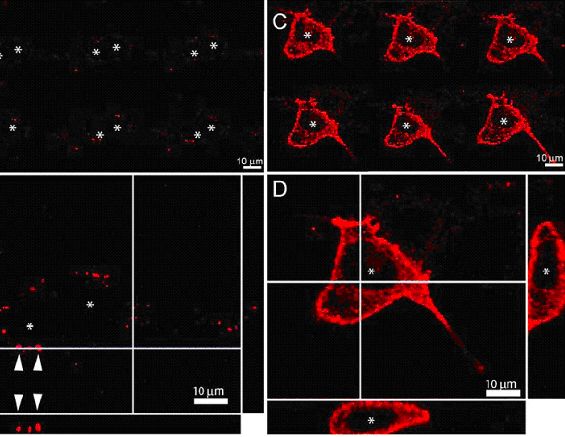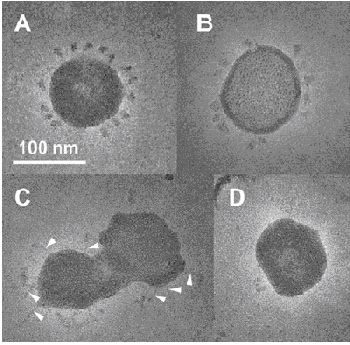
|
Fig. 1: Inhibition of MHV-A59 infection of different murine cell lines by inhibitors of endocytic uptake and endosomal acidification |
Mechanisms of Viral Entry and Replication |
Infection by the coronavirus mouse hepatitis virus (MHV)-A59 requires the release of the viral genome by fusion with the respective target membrane of the host cell. Fusion is mediated by the viral S-protein.
Results:
Infection of cells is strongly inhibited by lysosomotropic agents and substances
which interfere with clathrin-dependent endocytosis, suggesting that MHV-A59 is
taken up via endocytosis and delivered to acidic endosomal compartments (Fig.
1).

|
Fig. 1: Inhibition of MHV-A59 infection of different murine cell lines by inhibitors of endocytic uptake and endosomal acidification |
Fluorescence confocal microscopy of labeled MHV-A59 confirmed that the virus is taken up via endocytosis. Bright labeling of intracellular compartments suggests their fusion with the viral envelope (Fig. 2).
 |
 |
| Fig.2: Confocal Microscopy of labeled MHV-A59 with 17Cl-1 cells | Fig.3: Electron micrograph of low-pH pretreated MHV-A59 virus particles |
Additionaly, electron microscopy revealed low pH triggered conformational alterations of the S-ectodomain (Fig. 3). The results imply that endocytosis plays a major role in MHV-A59 infection and that the acidic pH of the endosomal compartment triggers a conformational change of the S-protein mediating fusion.
References:
Eifart, P., Ludwig,K., Böttcher, C., de Haan, C.A.M., Rottier, P.J.M., Korte,
T. and Herrmann, A. (2007)
The Role of Endocytosis and low pH in Cell Entry of the Murine Hepatitis Virus
MHV-A59.
Journal of Virology, 81: 10758–10768.